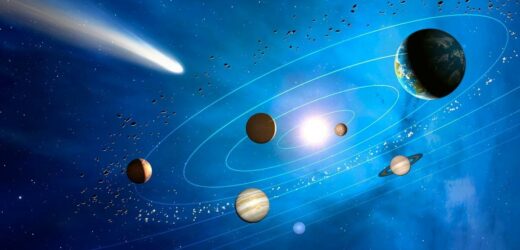Scientists have discovered that Uranus could have been hit by an object around twice the size of earth.
New research looking at why the plant has a strange tilt, led by Jacob Kegerreis, PhD researcher at Durham University, shows that it could have been hit by an object made of rock or ice around four billion years ago.
Experts from the university, writing in the Astrophysical Journal, used 50 different impact scenarios to make the discovery, which also found that debris from the impact has been acting like a thermal shield for the planet ever since – hence why it has a cold outer atmosphere.
Mr Kegerreis said: “Uranus spins on its side, with its axis pointing almost at right angles to those of all the other planets in the Solar System.
“This was almost certainly caused by a giant impact, but we know very little about how this actually happened and how else such a violent event affected the planet.
“Our findings confirm that the most likely outcome was that the young Uranus was involved in a cataclysmic collision with an object twice the mass of Earth, if not larger, knocking it on to its side and setting in process the events that helped create the planet we see today.”
Earlier this year, Mr Kegerreis and his team – and a supercomputer – also found that impacts such as this could have a “wide range of consequences” on young plants and their atmospheres.
According to The Northern Echo, that discovery was made using the COSMA supercomputer, part of the DiRAC High-Performance Computing facility in Durham.
More than 100 detailed simulations of different giant impacts on Earth-like planets, were done, with subtle changes, such as altering the speed and angle of the impact, being made each time.
It found that smaller impacts would lead to much less atmospheric loss than a direct head-on collision.
These findings were also published in the Astrophysical Journal.
To stay up to date with all the latest news, make sure you sign up for one of our newsletters here.
Source: Read Full Article




